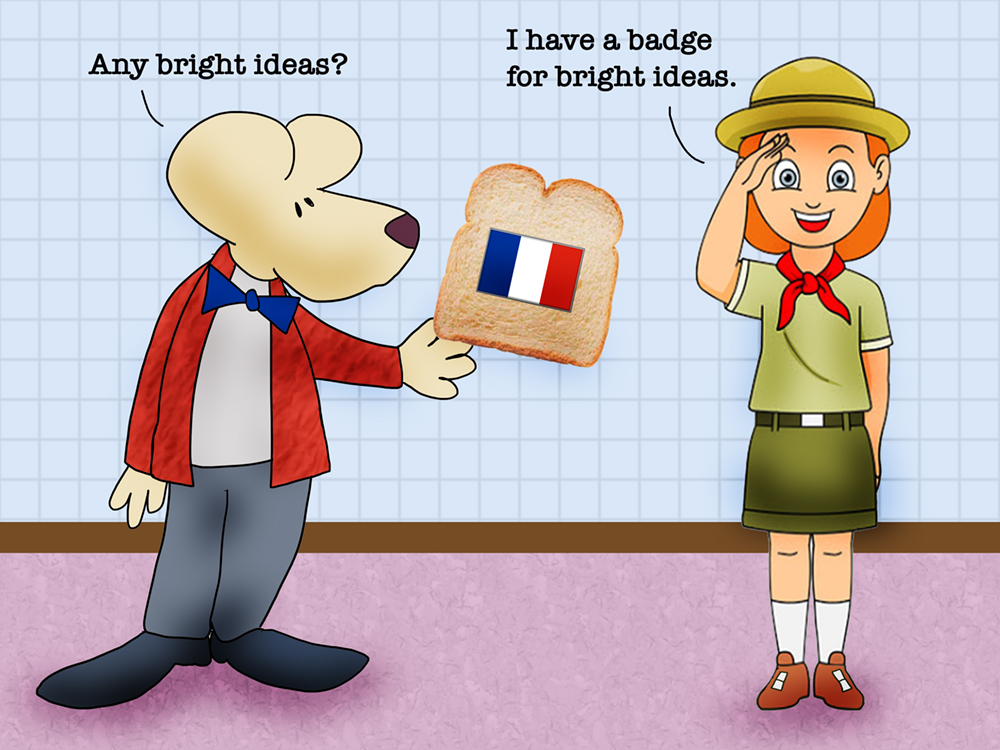Just the other day, I heard that the Girl Scouts are bringing on a new flavor, starting in 2021. Ta-Da. It will be the amazing and incredible French Toast flavor.
Yes, they made the big announcement. The Girl Scouts of the United States of America are introducing Toast-Yay!, which will be added to the 2021 cookie season lineup. Oh, and they’re cute. They look like little slices of bread, like French Toast. Except they are topped with icing.
It caught my eye because I have a special place in my heart for French Toast. And as this reality hit me, I wondered just how many other Americans feel as strongly as I do about breakfast, or if it just a Kronenberger thing.
I love breakfast. I’m not going to commit to saying it is my favorite meal of the day. The other meals may get jealous if I do that. And you know what they say about not having favorites.
Anyway, as many of you already know, from my continued antics here, I was born into an egg family. It sounds like my siblings were eggs, the way I said that. But what I meant is that we ate dubious amounts of eggs. In fact, every morning we had eggs. Our only respite was Saturday.
And that is where French Toast would come in. (On a rotating basis with pancakes or waffles.). It would be difficult to pick a favorite there too. But I loved French Toast. We ate it loaded with butter and maple syrup. Technically, it was margarine of the Chiffon variety, and syrup of the Karo variety.
Thinking back about it, nothing seemed French about this toast. I’ve been to France. I’ve had unpleasant times in France. And French Toast is so happy and nice. So I speculated about its history.
According to one legend, it was a man named Joseph French who came up with the goods. He created the dish in 1724, and advertised it as “French Toast.” He meant to call it French’s Toast, but he forgot the apostrophe and the s.
But it seems that French Toast has been around a lot longer than that. According to a collection of recipes from the early 5th century AD, there used to be a dish that was served during the age of the Roman Empire. It was called Pan Dulcis. Our good Roman cooks would soak bread in a milk and egg mixture, then fry it in oil or butter.
There are other accounts of a dish that was created by medieval European cooks. Back then, food was sometimes very scarce. And they needed to utilize every bit of food they could find to feed their families. So when their bread went stale and pale, they found out they could “revive” it by adding moisture and then frying. They used eggs for the extra moisture when they had eggs.
This concoction has been called a lot of things over the years. The phrase “French Toast” first appeared in print in the Encyclopedia of American Food and Drink in 1871. But some other names are German toast, eggy bread, French-fried bread, gypsy toast, Poor Knights of Windsor, Spanish toast, nun’s toast, and pain perdu which means “lost bread” in French. What the heck? Poor Knights of Windsor?
I don’t see Roman Toast in there, but by my estimation, it should be the one by which it is called.
Here’s another thing about French Toast. Depending on where you are, it could be served in a variety of ways. I mentioned how we ate it. Butter and syrup. But some people like powdered sugar. Others like fruit toppings and fruit syrups. In Scotland, it takes a different turn. French toast is traditionally served with sausage between two slices of French toast, eaten as a sandwich. It is also sometimes eaten with ketchup in Great Britain. I’d be happy with either of the last two.
So there it is. A little look at French Toast.
Coming soon to a Girl Scout Cookie near you.
Thank goodness they aren’t delving into French Horns, French Poodles, or French Braids. But those are more happy things that didn’t come from France.
=========
The most beautiful thing we can experience is the mysterious. It is the source of all true art and science.
— Albert Einstein
=========
There is a road from the eye to the heart that does not go through the intellect.
— G.K. Chesterton
=========
Doing what you like is freedom. Liking what you do is happiness.
— Frank Tyger
=========
